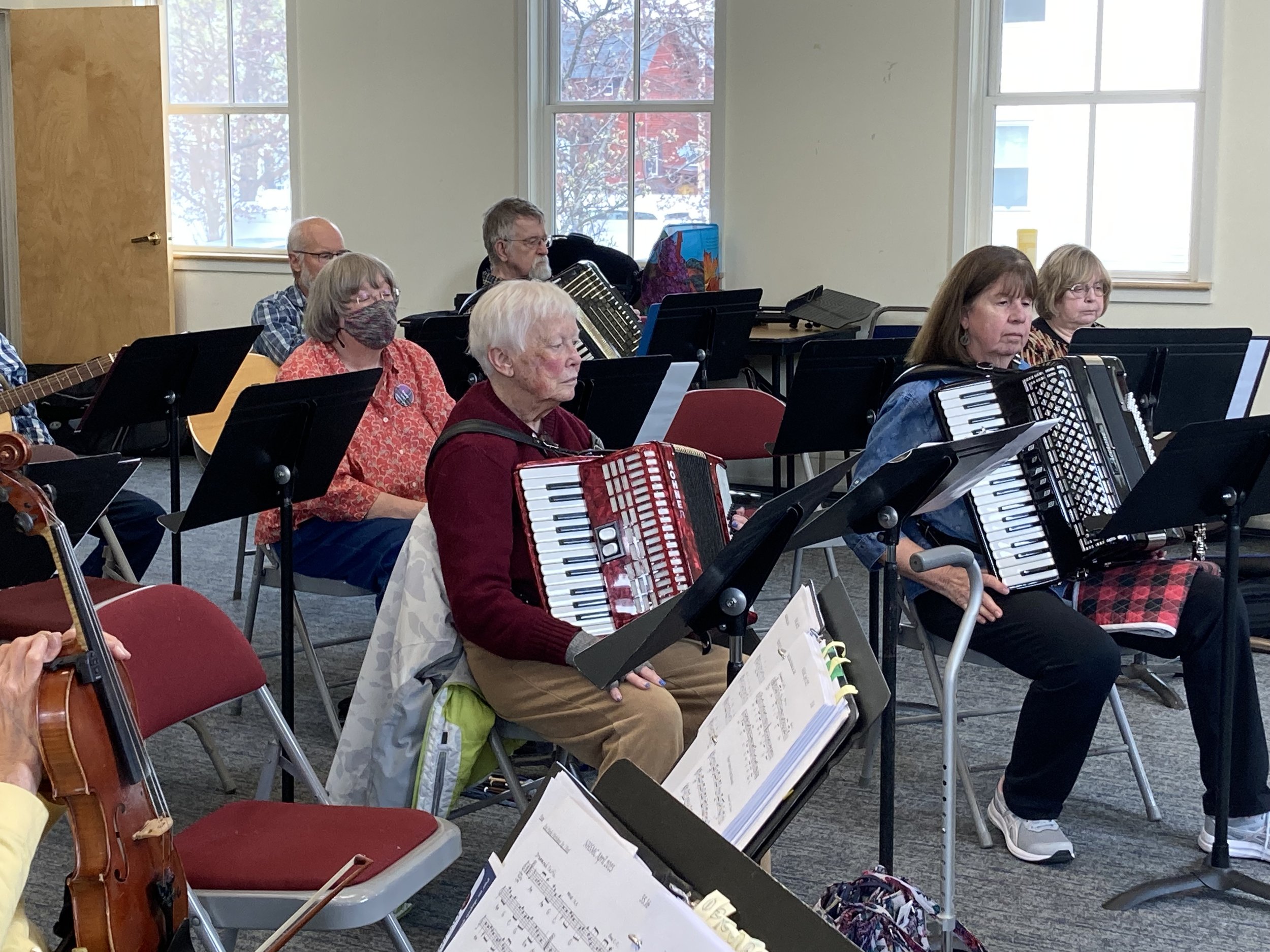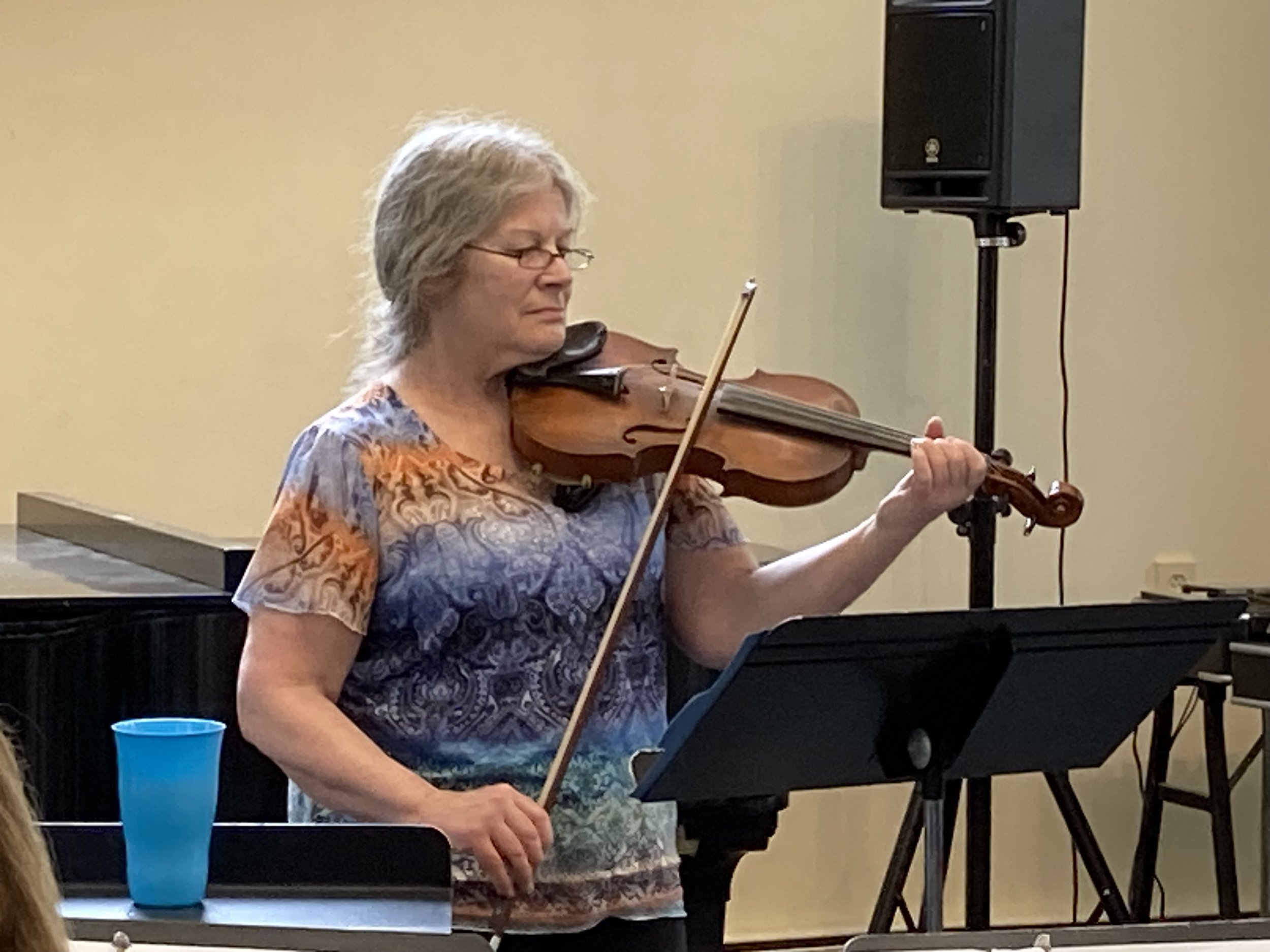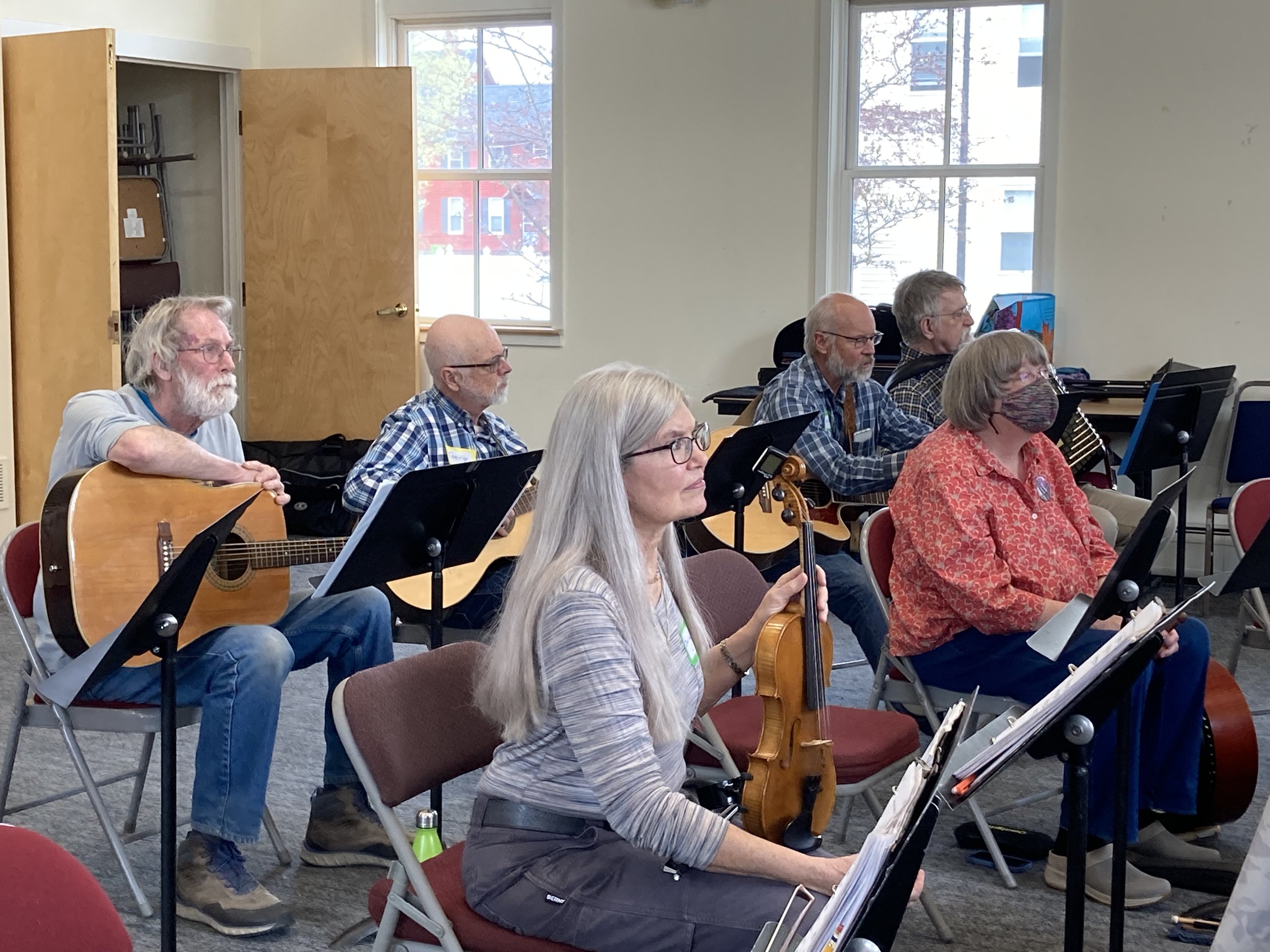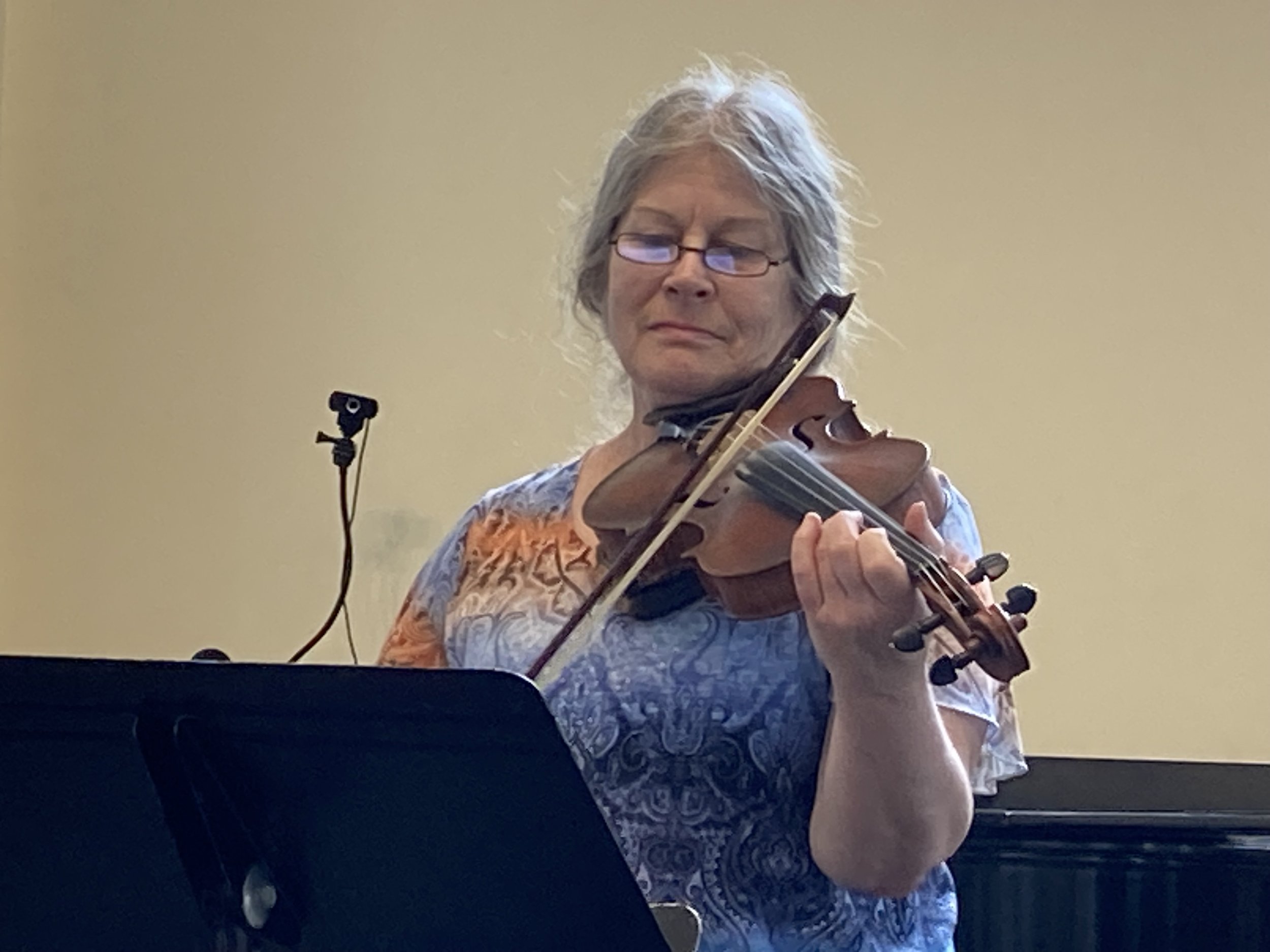April Workshop Recap
From Gordon Peery:
“You’ve got to be grounded in the string when you start.”
These are words that Pam used to describe cuts (which is sort of triplet on steroids). But they could be applied to several things she talked about. Throughout the workshop she emphasized the importance of pushing boundaries, and not being afraid of “bad” notes, which she defined as any note that was not what you intended to play.
Her own “getting to the next level” with playing cuts came from watching Alasdair Fraser in concert, then going home and practicing in front of a mirror till she felt she was replicating his movements. She talked about the importance of a fluid wrist, but a firm forefinger for controlling the bow.
Pam presented three tunes for us to work with. Drummond Castle, and Master Andrew Grant (Balmoral) and Hector the Hero. Her approach was to play a phrase, then have everyone repeat it. While most participants were working off sheet music, this would facilitate learning by ear as well. Within each phrase there were subtle details that she introduced relative to bowing and accenting - things that are not generally indicated in the written music. Then the parts were pulled together, and very quickly the group’s rendering of the tune sounded like we’d been working on it for much longer.
Someone brought up the absence of slurs in a place that would seem to call for them. She noted that this is more common in Scottish music, with a specific comparison to Irish music where slurring is more common.
She talked about the importance of dynamics in creating appropriate textures for a tune. One suggestion she had for guitar players was to make use of rolling chords - essentially letting the chord break over several notes rather than a full strum all at once.
She suggested that the tunes should be played in a way that inspired movement: dancing, marching - the kind of energy that pipes might provide, without actually having to use the pipes!
While we have been encouraging our players to smile, particularly in performance, it’s worth noting that smiles were abundant during this workshop. This observer thinks this was a combination of people being delighted at all the little details Pam was teaching, and her easy going and entertaining delivery.
There were abundant questions, and some good discussion.
From Anne Baier:
We enjoyed a workshop given by Pam Weeks. Although the tunes were in the order of Hector the Hero, Drummond Castle, and Master Andrew Grant (Balmoral), she chose to work on Drummond Castle first. She broke the tune into phrases, playing one phrase at a time and then having the group play it. She talked about giving space between the quarter note and the eighth note in each measure where that occurs. And she mentioned using an open E string, for emphasis, as opposed to using the 4th finger on the A string for a quieter sound.
Next, we worked on Master Andrew Grant (Balmoral). Pam said that we should make the pick-up notes a full beat at Drummond Castle tempo to ease the transition, then start the new tempo. She also outlined the phrases, as she did with Drummond Castle. There were some technical errors in the dots, and she will send the correct music.
Lastly, we worked on Hector the Hero. She emphasized that this is a slow air. Do not speed it up. We talked about the fermatas, one over the high A in the A part, and one over the high A in the B part. Pam also talked about grace notes, which should be noted as an A (440) before the high A in the A part, and C# before the high A in the B part. We talked also about dynamics and how different instruments have control over this.



